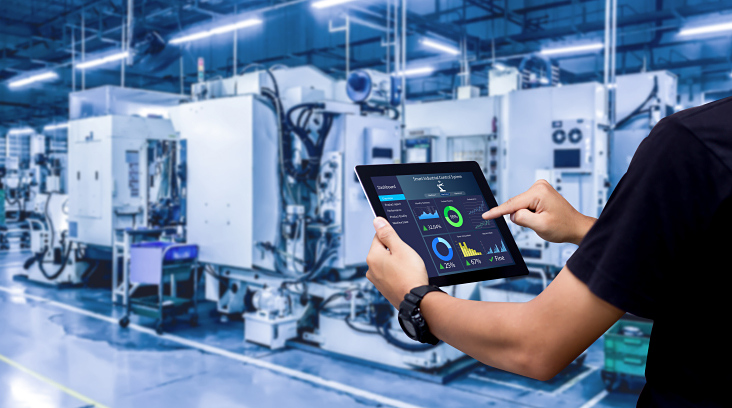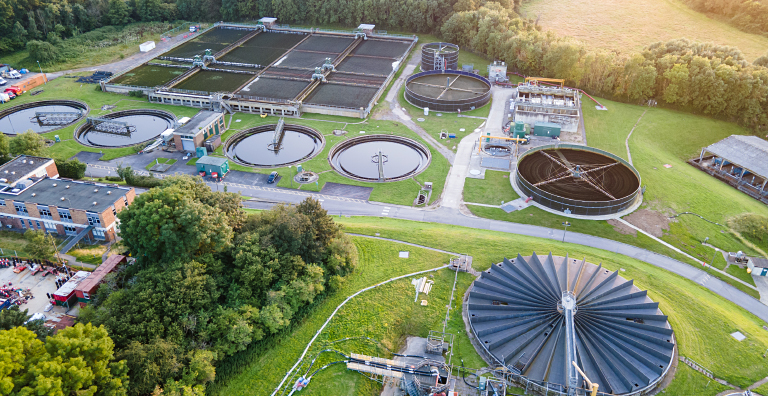Condition Monitoring Enables Predictive Maintenance
What is Predictive Maintenance?
The cost of industrial equipment failures can be staggering. One real world use case, discussed later in this story, is a good example of predictive maintenance. In that case, online vibration monitoring revealed the root cause of the problem, which was creating huge unplanned costs.
Predictive maintenance, enabled through condition monitoring, has many uses and benefits for industrial-scale operations.
However, before getting into a discussion about condition monitoring (CM), we must first look at the concept of predictive maintenance (PM).
According to a recent white paper published by Infineon:
Predictive maintenance refers to being able to anticipate maintenance before it becomes urgent…predicts system failures and aims to prevent them…various parameters are constantly monitored and analyzed. As soon as anomalies in function or wear become apparent, maintenance or repairs can be planned around the regular operation of smart buildings, plants or machines…any upcoming system failures…can be prevented — thus making operations more reliable and cost-efficient.
What is Condition Monitoring?
PM would not be possible were it not for another aspect of this operational model: condition monitoring. And more specifically, CM enabled through efficient Internet of Things (IoT) and cloud-based applications.
CM is real-time monitoring platform to assess the health and performance of industrial equipment. This is achieved through a low-cost, wireless, remote monitoring system (e.g., sensors and beacons) providing vibration and temperature data in real time. Increased visibility into equipment performance using multiple data points allows the facility to monitor and react quickly to critical events.
CM is also a part of a greater ecosystem of solutions that revolve around IoT and IIoT (Industrial Internet of Things). Engineering.com concludes that CM along with PM and digital twin (a virtual model of a physical object) are a trifecta of IIoT market-disrupting strategies that have incredible value for large- and small-scale industries.

Why Condition Monitoring Enables Predictive Maintenance
When defining the value of CM, one must look at it in terms of levels and costs for traditional CM categories.
These boil down to how an enterprise wants to strategize their maintenance practices.
For example, an operation may choose to run-to-failure, where the equipment is basically operated until they breakdown — not a very efficient strategy and promotes the most amount of downtime. There’s also scheduled maintenance where machine maintenance in performed at regular intervals, shorter than the expected time between failures. Again, this is not terribly efficient, but it at least reduces the amount of downtime. Finally, there’s the holy grail of maintenance practices: condition-based or predictive maintenance — or as it is commonly known as condition monitoring.
To better understand that last one, let’s look at the three levels of CM: fault detection, diagnostics and prognostics.
The first of these three, fault detection, requires permanently installed sensors, where data is collected intermittently. Though this level of CM comes is the most economical — determining that something happened, such as a part failure — it is a long way from the best approach.
Diagnostics determines what happened through root cause analysis and identifying which parts to replace and what maintenance to perform. However, the disadvantage to this model is that it requires data to be collected at extremely high rates, as well as advanced data processing offline via expert analysis. Furthermore, this approach is a little more expensive than the previous one.
The best of all possible scenarios, and the most expensive, is prognostics. Here continuous data streams performed by high-fidelity instruments predict the remaining useful life of equipment. This approach offers the highest reduction in inspection and maintenance costs. Prognostics requires the permanent installation of sensors, and is ideal for more sophisticated operating equipment. Providing a digital thread of data from maintenance history to failures, this scenario is basically predictive maintenance.
As mentioned before, PM is based on a known or predicted health state of the asset, through CM systems. This offers the highest ROI value, not only reducing downtime, but offering insights into the equipment that others systems are incapable of.
However, the most expensive solution does not actually cover a vast majority of the machines in question. There is a big need for lower cost CM for 90% of a fleet of equipment.
Remote condition monitoring is an effective, non-intrusive and low-cost solution for non-critical motors that are indeed critical to an industrial operation. Brad Williams, Global Sales Director, Industrial - IOT Services at HID
The following charts illustrate how both artificial intelligence (AI) and machine learning (ML) are also integrated into the data analytics process providing a complete solution from the sensor to the cloud.
And now thanks to low-cost RFID wireless sensors such as HID’s BEEKs Industrial or CM v2 BLE beacons that can detect 3-axis vibrations and temperature variations, CM (and by extension PM) can be extended to the remaining 90% of a facility’s equipment fleet. Furthermore, an entire operation’s factory floor can be blanketed with a real-time bi-directional data network enabled by HID’s BluFi gateways, allowing 3rd party cloud-based applications to parse and leverage sensor data as enterprise decision-makers see fit.
Avoiding the Staggering Costs of Industrial Equipment Failures
Sometimes the simplest solutions are the most economical. However, identifying that solution may be a daunting task — especially when you don’t have the right tools at your disposal.
For one industrial service provider, their wastewater treatment customer was facing a near catastrophic situation dealing with a hidden yet simple issue that only remote condition monitoring sensors could reveal.
Before the implementation of said sensors, the utility was racking up huge costs repairing pumps that should not have failed so quickly. After the implementation, the root cause of the problem was quickly identified: loose bolts due to improper installation.
In the end, the bolts were tightened and the utility saved hundreds of thousands of dollars, as well as avoiding major environmental issues that would have cost them even more!
IoT-Enabled CM Optimizes Operations for Many Industries
When RFID tags are placed on product materials such as part assemblies, the flow of these through their manufacturing processes can be monitored.
One of the benefits of this strategy is that invisible waste is revealed through that tracking. And, by using date to know when to increase the flow rate of said product through the manufacturing facility, the operations become more efficient — and more profitable.
When organizations put CM sensors on equipment that runs 24/7 on the factory floor, they get an unfettered view as to how well the equipment functions, when they are about to fail and other conditions to base maintenance and upgrading decisions on.
The idea around asset downtime is that CM is implemented on motors, pumps and valves, which are critical to keep machines moving parts and products down a conveyor system. A remote wireless system that detects vibrations and looks at the potential failure of this monitored equipment will give fault detection based on vibration and temperature anomalies it picks up.
A well-orchestrated predictive maintenance program will all but eliminate catastrophic equipment failures. — United States Department of Energy
This PM strategy allows a service tech to get ahead of a failure which could interrupt the production flow.
A 2010 paper published by the US Department of Energy states that “a well-orchestrated predictive maintenance program will all but eliminate catastrophic equipment failures.”
The DoE paper also includes the following PM value-based stats about predictive maintenance:
- Return on investment: 10 times
- Reduction in maintenance costs: 25% to 30%
- Elimination of breakdowns: 70% to 75%.
- Reduction in downtime: 35% to 45%
- Increase in production: 20% to 25%
Additionally, a 2017 white paper on predictive maintenance published by the Deloitte Analytics Institute highlights the value-added ROI of adopting this model:
“On average, predictive maintenance increases productivity by 25%, reduces breakdowns by 70% and lowers maintenance costs by 25%. It is based on advanced analytics and marks a new way of organizing and implementing maintenance on an industrial scale.”
PTC’s 2020 white paper on Predictive Analytics also reflects this new Industry 4.0 trend:
“The combination of sensors plus connectivity plus predictive analytics allows a proactive approach to maintenance that lets companies cut costs, get more life out of installed equipment, and reduce downtime…Most importantly, connectivity technologies and the data collected are essential to take part in future industry initiatives such as Industry 4.0 and digital twins.”
And finally, HID’s own 2021 white paper on the subject highlights this game-changing technology:
“GAME CHANGER: REAL-TIME, ACCURATE, CONTINUOUS FAULT DETECTION
As a leader in boosting efficiency, enhancing productivity, and connecting things, HID answered the challenge to the growing need for a real-time monitoring solution that provides increased visibility into equipment performance using multiple data points to monitor and react quickly to critical events.”
CM and PM are a synergistic part of an overall industrial best practice and are not opposing strategies. CM is what enables PM because a truly effective solution looks holistically at the entire operation and applies different methods to fill in the operational gaps.
At the end of the day, a proper IoT-enabled condition monitoring installation allows predictive maintenance to ply its power to:
- Improve inspections and efficient maintenance practices
- Improve operations decisions
- And, most importantly, save money
Check out HID’s Starter Kit to know more about how to Deploy Real-Time Predictive Maintenance Quickly and Easily to Improve Decision Making in Your Facility >>
Nick Iandolo is an experienced Senior Editor Marketing Strategist specializing in Content Marketing and Corporate Communications Writing, primarily for market-disrupting technology organizations. His work has been featured in publications such as Morning Consult, NewDesign Magazine UK, SmartCard Identity News, and Construction Outlook. Nick is also a Spartan Race athlete, and lives just outside of Boston Mass with his wife, daughter, and Golden Retriever.
